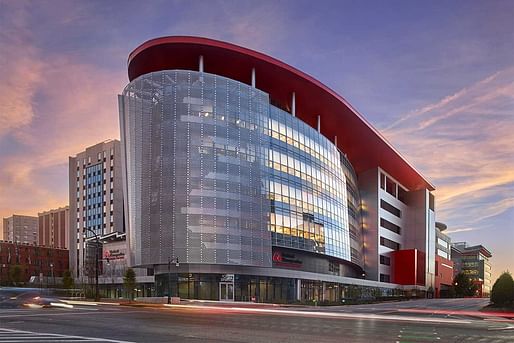

The World Green Building Council (WGBC) has published its Advancing Net Zero Status Report 2021, offering an overview of the construction sector’s progress towards decarbonization throughout the last twelve months. Available to read and download here for free, the 48-page report offers detail on the sector's progress towards net-zero carbon, including the scale of the problem, positive case studies from the industry, and responses to common misconceptions about net-zero carbon in buildings.
The report is an output of the GBC’s Advancing Net Zero global program; a pillar of the organization’s response to climate change. The 2021 report contains a world map showing participation in the program by the GBC’s global network, and an update on the GBC Net Zero Carbon Buildings Commitment, whose 141 signatories include 107 businesses, 28 cities, and 6 states/regions.
“A bold approach is urgently required to reduce the [environmental] impacts of the sector, which is globally responsible for 36% of energy consumption, 38% of energy-related carbon emissions, 50% of resource consumption, and expected to double in total footprint by 2060,” says the report. In addition, the report highlights the fact that while embodied carbon (created before a building is completed construction) currently accounts for 10% of emissions globally, it is estimated that more than half of total carbon emissions from new construction over the next 30 years will be due to embodied carbon.

To combat these projections, the report sets out the trends and innovations governing the GBC’s push for a net-zero construction sector. Among the benchmark and target resources highlighted are the Carbon Leadership Forum’s Material Baseline Report 2021, which offers estimates of embodied carbon emissions per building product category, and the Embodied Carbon Primer prepared by the London Energy Transformation Initiative (LETI).
Innovations in materials and technology are also summarized in the report, including the Decarbonization Challenge for Steel report by McKinsey, responding to the estimate that 8% of global carbon dioxide emissions are the result of steel production. On the topic of carbon capture, the report references emerging technology such as CarbFix, which turns CO2 into stone, and Aether, which creates carbon-negative diamonds from CO2. On a legislative level, the report highlights the SCALE Act and CLEAN Future Act, two pieces of legislation recently introduced to the U.S. Congress setting standards for carbon capture infrastructure and clean energy in buildings, respectively.

Other areas of note within the report include GBC rebuttals to six common myths surrounding net zero in buildings, including “net-zero operational carbon can’t be achieved without offsets” and “net-zero buildings are more expensive.” To argue these claims, the report sets out a range of case studies and references from real-world examples. Separately, as Scotland prepares to host the 2021 United Nations Framework Convention on Climate Change 26th Conference of Parties (COP26), the report offers an analysis of how Scotland is using the conference as a catalyst to enhance their own climate legislation.
Read the full report on the World Green Building Council website here.
No Comments
Block this user
Are you sure you want to block this user and hide all related comments throughout the site?
Archinect
This is your first comment on Archinect. Your comment will be visible once approved.